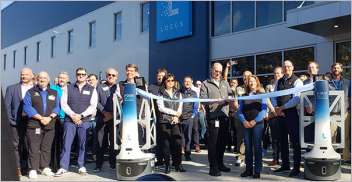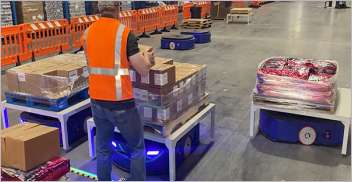At their recent conference, Gartner released the top 25 Supply Chain list, which provides insight into the focus of successful companies.
We take particular interest in the discussion of the standout trends for supply chain leaders:
1. Understanding and Supporting the Fully Contextualized Customer
“An enduring trait of leading companies is that customer needs and behaviors serve as the starting point for go-to-market and operational support strategies. The best of them present simple, elegant solutions to their customers, driven by conscious supply chain orchestration behind the curtain. Their center-led cultures enable consistently high-quality customer experiences tailored, where important, to local tastes.”
2. A Convergence of Digital and Physical Supply Chains Delivering Total Customer Solutions
“Leading companies have moved past selling only discrete products or services to their customers and are now focused on delivering solutions. Regardless of industry, these companies want their customers to be loyal subscribers to their solutions. Several of the leading consumer product companies on this year’s list are offering e-commerce subscriptions for their products, in partnership with retailers, to create a seamless multichannel experience. This approach offers convenience and privacy to end customers that would normally buy these products in a physical store and might switch to another consumer brand during any given store shopping visit.”
3. Supply Chain as Trusted and Integrated Partner
“Growth is a top priority for the C-suite in 2014, with 63 percent of senior executives picking growth as a top imperative in Gartner’s 2014 CEO Survey. Leading supply chains are enabling this growth both organically and through successful M&A integration. At the same time, supply chain leaders are emerging as trusted and integrated partners to business groups. Their focus on profitable growth often leads to smarter, more conscious decision making, saving business groups from spiraling out of control in the drive to maximize revenue.”
What does all this mean in practice for companies who want to achieve these goals?
End to End approach – while this has been a mantra for many years, it is finally becoming a reality in many companies as procurement is moving closer and often becoming integrated with the supply chain organization. Combining this new organizational reality with the easier access to data enabled by the prevalence of Enterprise Resource Planning and other systems creates new opportunities for efficiencies and improved customer service.
For example, it enables sourcing decisions to be made in the context of the entire supply chain. One example is Pepsico Worldwide Flavours who looked at inventory in a new way by including manufacturing raw material in their analysis and achieved significant savings.
An end to end optimization approach can also discover hidden opportunities that can open up new efficiencies in handling inventory. Companies are often skeptical about how much improvement can be gained from this approach. Schneider Electric, the Global Specialist in Energy Management decided to test this out. We worked with them on building a model for the Miniature Breaker Product Line, a product to control and distribute electric power. The team believed there were inventory opportunities based on Single-Echelon Inventory Modeling techniques currently in use. Recent fluctuations in demand had led to extensive spend in terms of expedites and employee overtime to meet customer requests.
The results were quite significant – with single echelon inventory optimization, Schneider Electric could reduce costs by 11%, but if they were to employ end-to-end inventory optimization they could achieve a 30% reduction while maintaining the same service levels.
Customer Value Driven Operations – It is not enough to be demand driven, you need to understand the customer value that you are offering different customers. It can be about responsivenes, efficiency, diversity or scarcity and the same company could be offering different customer values to different segments of its own customers.
Our approach based on the Operations Rules concept of customer value driven supply chain strategy can enable companies to make the smart operations decisions that match its strategy. There is no one size fits all, or lowest cost solution to a company’s supply chain and operations strategy. But rather by understanding the company’s unique customer value propositions across different product lines and channels and integrating it into the right strategy can provide the most benefits.
An example, is Dell which was struggling with adapting to retail sales after years of perfecting a demand driven model. The way it approached this challenge was by segmenting its supply chain to create different strategies for each type of customer. For online low volume it used a pull strategy, for retail it used push and for online high volume items it used a push/pull strategy.
Integrating Risk into the Design Process – with the focus of many companies on profitable growth they also need to consider the risks inherent in new markets, facilities and partners. An integrated network design process can enable the company to make decisions in an informed, creative and systematic way that takes into account risk and still finds cost effective solutions.
An example of this is described in From Superstorms to Factory Fires, which shows how Ford Motor Company applied David Simchi-Levi‘s Risk Exposure Index (REI). This enabled them to focus their mitigation efforts on the most important suppliers and risk areas instead of ignoring them or using an exhaustive approach.
Supply Chain Analytics Center of Excellence – these are becoming common practice among successful companies. However, for many companies there are significant constraints around hiring and retaining talent for these centers. They may also not take advantage of readily available off the shelf technology. Striking the right balance between internal development and outsourcing is key to making these centers effective. Many companies can achieve their goals through creation of a more rigorous and data-driven approach to supply chain and operations strategy and the Center of Excellence is the key to continue to drive these practices in an organization.
Related Gartner Articles:
Gartner’s Rankings of Its 2014 Supply Chain Top 25
JDA Software: Leader in ALL of Gartner’s Supply Chain Magic Quadrants
Kinaxis Positioned in Gartner’s Leaders Magic Quadrant for Supply Chain Planning System of Record
Why I No Longer Believe in the Gartner Supply Chain Top 25
Article topics
Email Sign Up
















